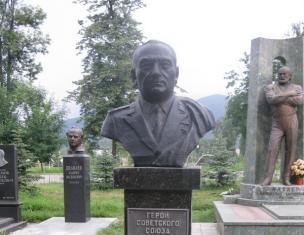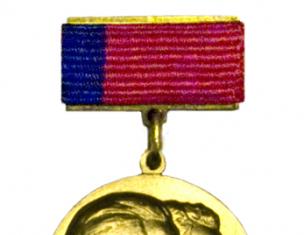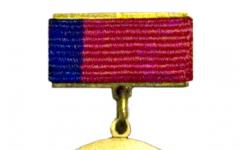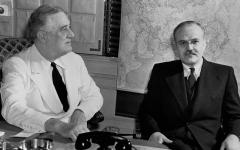Students and graduate students of higher educational institutions, research institutes and employees of industrial enterprises of the aerospace complex under the age of 30, as well as schoolchildren are invited to participate in the conference.
Directions of the conference:
1. Technology of production of rocket and space technology;
2. Design and production of aircraft;
3. Propulsion systems and thermal control systems of aircraft and spacecraft;
4. Modeling of physical, mechanical and thermal processes in machines and devices;
5. Models and methods for analyzing the strength, dynamics and reliability of spacecraft structures;
6. Advanced materials and technologies;
7. Machine design and robotics;
8. Electronic equipment and technologies;
9. Welding of aircraft and related technologies;
10. Automation and electronics;
11. History, development and operation of rocket and space technology;
12. Mathematical methods of modeling, management and data analysis;
13. Information systems and technologies;
14. Information and management systems;
15. Methods and means of information security;
16. Information and economic systems;
17. Operation and reliability of aviation equipment;
18. Technical operation of electrical systems and avionics;
19. Ecology of industry;
20. Industrial safety;
21. Metrology, standardization, certification;
22. Concepts of modern natural science;
23. Economics and business;
24. Marketing and commercialization of space;
25. Management of modern enterprises, industries, complexes;
26. Space exploration: history and modernity;
27. Problems of legal regulation in the aerospace industry;
28. Modern problems of economic theory and regionalism;
29. Fundamental and applied problems of the humanities;
30. Modern technologies of social and project management;
31. Innovative technologies for personnel management;
32. Innovative technologies in financial management;
33. Management in knowledge-intensive industries;
34. Philosophy of space and astronautics: prospects for development in the twenty-first century;
35. Finance and credit;
36. Modern logistics technologies in the development of the aerospace complex;
37. Current political problems of space and cosmonautics;
38. Innovative and health-saving technologies in modern education
39. Youth, science, creativity (school section).
To be included in the conference program with a report (full-time participation) MUST be submitted to the organizing committee by e-mail before March 26, 2012 [email protected] application for participation in the conference.
To publish the conference materials in the collection of conference materials, you MUST send to the organizing committee by mail before April 22, 2012:
- printed text of the abstract (1 copy), signed by the supervisor and an electronic version by e-mail [email protected] in accordance with the requirements of the organizing committee;
- expert opinion on the possibility of publication in the open press (the original is required) for sections 1 – 22.
From April 8 to April 12, 2013. at the Siberian State Aerospace University named after Academician M.F. Reshetnev will host the IX All-Russian Conference of Creative Youth "Current problems of aviation and astronautics" dedicated to Cosmonautics Day.
Students and graduate students of higher educational institutions, research institutes and employees of industrial enterprises of the aerospace complex under the age of 30, as well as schoolchildren are invited to participate in the conference.
Directions of the conference:
- Technology of production of rocket and space technology.
- Design and production of aircraft.
- Propulsion systems and thermal control systems of aircraft and spacecraft.
- Modeling of physical, mechanical and thermal processes in machines and devices.
- Models and methods for analyzing the strength, dynamics and reliability of spacecraft structures.
- Advanced materials and technologies.
- Machine design and robotics.
- Electronic equipment and technology.
- Aircraft welding and related technologies.
- Automation and electronics.
- History, development and operation of rocket and space technology.
- Mathematical methods of modeling, management and data analysis.
- Information systems and technologies.
- Information and control systems.
- Methods and means of information security.
- Information and economic systems.
- Operation and reliability of aviation equipment.
- Technical operation of electrical systems and avionics.
- Ecology of industry.
- Industrial safety.
- Metrology, standardization, certification.
- Concepts of modern natural science.
- Economics and business.
- Marketing and commercialization of space.
- Management of modern enterprises, industries, complexes.
- Space exploration: history and modernity.
- Problems of legal regulation in the aerospace industry.
- Modern problems of economic theory and regional studies.
- Fundamental and applied problems of the humanities and modern communications.
- Modern technologies of social and project management.
- Innovative technologies for personnel management.
- Innovative technologies in financial management.
- Management in knowledge-intensive industries.
- Philosophy of space and astronautics: prospects for development in the twenty-first century.
- Finance and credit.
- Current problems in logistics and supply chain management.
- Current political problems of space and astronautics.
- Innovative and health-saving technologies in modern education
- Youth, science, creativity (school section).
To be included in the conference program with a report (full-time participation), you must until March 29, 2013
“CURRENT PROBLEMS OF AVIATION AND SPACE – 2015. Volume 2 UDC 629.7.05 ANALYSIS OF NAVIGATION EQUIPMENT PROVIDING LANDING OF UNMANNED AIRCRAFT...”
CURRENT PROBLEMS OF AVIATION AND SPACE – 2015. Volume 2
ANALYSIS OF NAVIGATION EQUIPMENT PROVIDING
LANDING UNMANNED AIRCRAFT
A. V. Puchkov, S. A. Aldaev
Scientific supervisor – G. M. Grinberg
Siberian State Aerospace University named after Academician M. F. Reshetnev
Russian Federation, 660037, Krasnoyarsk, ave. them. gas. "Krasnoyarsk Worker", 31 E-mail: [email protected] The existing systems for monitoring the automatic landing of UAVs are considered, the measurement errors of each type of sensor are calculated and the conditions for their use are formulated.
Key words: automatic landing system, unmanned aerial vehicle, navigation equipment, GPS receiver, laser altimeter.
NAVIGATION EQUIPMENT ANALYSIS PROVIDING PILOTLESS
VEHICLES LANDING
A. V. Puchkov, S. A. Aldaev Scientific supervisor – G. M. Grinberg Reshetnev Siberian State Aerospace University 31, Krasnoyarsky Rabochy Av., Krasnoyarsk, 660037, Russian Federation E-mail: [email protected] The automatic landing control systems of the pilotless vehicles are discussed, the measurement errors of each type of sensors are calculated and the conditions of use of each type of sensors are formulated in the article.Keywords: the automatic landing control systems, pilotless vehicle, navigation equipment, GPSreceiver, laser altimeter.
Small-sized unmanned aerial vehicles (UAVs) are increasingly occupying a strong position among the general aircraft fleet and can solve a wide range of tasks at a relatively low cost of operation. Let's consider a class of small-sized autonomous unmanned aerial vehicles with a take-off weight of 10–50 kg. Of particular interest is the issue of automatic landing of these devices. The possibility of automatic flight is well developed and described in literary sources, for example in. Landing is an extremely difficult and critical stage of flight for all types of aircraft, and therefore the problems of automatic landing have not been fully solved.
Let us analyze the aircraft type of landing, which is most preferable for a UAV of the selected mass. Airplane landing is carried out in several stages. The first stage: having dropped to a height of 25 meters, the aircraft begins gliding, that is, the rectilinear and uniform movement of the aircraft along a downward inclined trajectory (along the glide path) to a height of 8-10 meters.
Then the aircraft is aligned along the course in order to get exactly onto the landing strip, and the aircraft is further lowered to a height of 1 meter. The third stage is holding, designed to reduce the speed of the aircraft. The final stage is landing, that is, touching the landing strip and running with braking along the runway.
There are several main problems when making a landing: firstly, it is determining the altitude in order to accurately determine the starting point for holding, secondly, determining the vector of air and ground speed so that the direction of the approach corresponds to the selected glide path, and, thirdly, thirdly, this is the determination of coordinates and provision of a given horizontal displacement in the direction perpendicular to the landing trajectory.
Section “INNOVATIVE AND HEALTH-SAVING TECHNOLOGIES IN MODERN EDUCATION”
The main problem is that the majority of existing systems are either closed (commercial developments that are not available to the scientific community) or are too complex and expensive.
Let's consider the most accessible radio navigation equipment installed on a UAV, such as a GPS receiver, a high-precision GPS receiver in differential mode, and a laser altimeter. Let's look at each system separately.
GPS receivers. The principle of operation is based on the simultaneous measurement of the distance to several broadcasting satellites located in known and adjustable orbits. Based on mathematical calculations, the device determines a point in space - coordinates (latitude and longitude of a place on the model of the Earth's surface, as well as height H relative to the average sea level of the model). The disadvantage is the relatively large error of this receiver. There are two types of error, horizontal, which affects the accuracy of determining the length of the landing strip, that is, if the error is large, the landing strip may not be enough for landing. The second type is vertical error, which shows the deviation from the runway axis.
Let's use the triangle rule to calculate the required runway margin to ensure guaranteed completion of the automatic landing (Fig. 1).
Rice. 1 – triangle for calculating the required length of the runway.
Here x is the glide path angle; H – accuracy of the device sensor; L – the amount of change in the length of the landing strip.
N tg x =. (1) L The accuracy of the GPS receiver sensor according to the data given in is: horizontally about 15 meters; vertically approximately 27 m. If we take the glide path angle equal to 15°, then the error
L will be equal to:
tg15 Based on the results obtained, we can conclude that an open area is required for landing a UAV equipped with a GPS receiver. For example, a field, since a landing strip is required with a width no less than twice the horizontal error - 30 meters and a length no less than necessary to complete a landing with a margin of 100 meters. A common disadvantage of using any radio navigation system is that under certain conditions the signal may not reach the receiver or may arrive with significant distortion and delay. Since the operating frequency of GPS lies in the decimeter radio wave range, the level of signal reception from satellites can be seriously degraded under dense foliage of trees or due to very heavy clouds. Normal GPS signal reception can be interfered with by interference from many terrestrial radio sources, as well as from magnetic storms. The approximate cost of a GPS receiver is 4-10 thousand rubles.
Let's consider a high-precision GPS receiver in differential mode. The so-called differential correction mode allows you to qualitatively reduce the error in coordinate measurement.
In this mode, two receivers are used: one is stationary at a point with known coordinates and is called stationary, and the second, as before, is mobile (installed on board the aircraft). The data received by the base receiver is used to correct the information
CURRENT PROBLEMS OF AVIATION AND SPACE – 2015. Volume 2
assembled by a mobile device. The sensor accuracy for this device, described in, is 0.1 m. Using the triangle rule we find:
0.1 L = = 0.37 m.
0.27 Based on the calculations, we can conclude that this equipment can be used for landing UAVs on dirt roads, since landing can be carried out on a narrow strip with an insignificant length margin (0.37 m). Thus, differential GPS measurements can be much more accurate than conventional ones. A reference station with known coordinates calculates corrections and broadcasts combined messages to correct satellite measurements.
These messages can be used by any number of slave GPS receivers to eliminate almost all errors in their measurements. High-precision GPS receivers such as NovAtel, JAVAD, Gatewing costing from 200 to 800 thousand rubles are effectively used in professional UAVs.
The laser altimeter is designed to measure distances to natural objects. The device is distinguished by its low weight and overall dimensions, low energy consumption, high accuracy of range measurement, and the ability to operate in a wide range of temperatures and mechanical influences. Instrument error ±(0.03+0.001·D)m, where D is the distance (the height at which leveling begins). In our calculations we will take 10m as the distance.
Substituting them into the formula for calculating the instrument error, we get:
±(0.03 + 0.001 10) = ±0.04 m, 0.04 L = =0.15 m.
0.27 Laser altimeters (profilometers) have the highest measurement accuracy and a relatively low cost from 15 to 50 thousand rubles.
The advantages of the device are: very large measurement range (more than 1000m), high reliability of measurements; high measurement efficiency for signals from reflective objects at large angles; high speed; low power consumption.
Disadvantages: lack of measurement for transparent objects, significant sensitivity in direct sunlight.
Based on the analysis and calculations carried out, the areas of application of each type of navigation measurement devices were formulated. For landing in open, wide areas, it is rational to use GPS receivers; for landing in conditions of limited landing strip sizes, a GPS receiver in differential mode. The use of a laser altimeter is justified if the accuracy of the GPS receiver in differential mode is insufficient.
1. Zinoviev A.V., Guziy A.G. // Problems of flight safety. 2008. No. 8. P. 40–49.
2. Krasilshchikov M. N., Sebryakov G. G. Control and guidance of unmanned maneuverable aerial vehicles based on modern information technologies. M.: Fizmalit, 2003.
3. Electronic textbook StatSoft [Electronic resource]. URL: http://www.ra4a.ru/publ/1/8-1-0-360 (date of access: 09/2/2015).
4. Electronic textbook StatSoft [Electronic resource]. URL: http://www.javadgnss.ru/products/oem (access date: 09/03/2015).
Similar works:
“stay in the country Check-in for the flight begins 2 hours before departure and ends 40 minutes. If you arrive late at the register..."
« Adobe Product Purchasing Programs Adobe VIP Program Guide Education Updated April 28, 2014 Subscription model significantly simplifies deployment and management Adobe Value Incentive Plan (VIP) licensing program...”
« Tariff plans of the "Winter is coming" line with automatic transition to tariff plans of the "Winter" and "Winter Amedia" line. From the 4th month From the 4th month and Tariff zone Period, past First 3 months or more from more from or region from the moment from the moment of the moment (city) of connecting the connection..."
« MBOU "Krupetsk Secondary School" REPORT on the activities of the school library for the 2014-2015 academic year.1. Basic information 1a. Information about school libraries Number of school libraries – Names of schools, in...”
« Violation of Leggett's inequalities in subspaces of orbital angular momentum J. Romero et al. (UK) Translation by M.H. Shulman ( [email protected], www.timeorigin21.narod.ru) An experimental verification of the Leggett model for non-local... is reported.”
« Dmitry Popov The intelligentsia through the eyes of a sociologist. Paradigm of visual sociology Sociology studies the world of human relations, the hidden world, unmanifested for researcher. The ways of its manifestation can be very different: the study of geographical spaces (E. Burgess), ideal types (M. Weber), etc. ... "
« BASIC REQUIREMENTS OF THE GENERAL DEVELOPER LLC "BILDEXPO", when arranging exhibition EVENTS AT IEC "CROCUS EXPO" 2017 INTRODUCTORY PART LLC "BuildExpo", being on the basis of Agreement No. 02-03/25-1 dated October 01, 2010, the General Developer of the Crocus Expo IEC, implements the received exclusive rights to carry out... "REPUBLIC OF BASHKORTOSTAN For the first time, the problem of managing target programs in Russia and Bashkortostan is considered in depth, in connection with social management and social planning. The essence of the problem is...”
2017 www.site - “Free electronic library - various documents”
The materials on this site are posted for informational purposes only, all rights belong to their authors.
If you do not agree with your material being posted on this site, please write to us, we will delete it within 1-2 business days.







